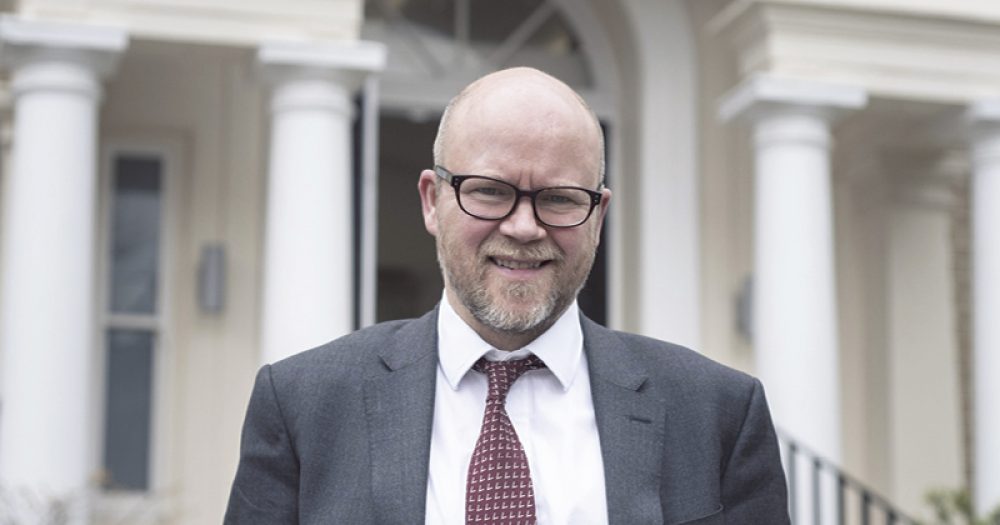Blackpool and Walsall have been identified as the two areas of the country most in need of new free schools, as the government prepares to restrict where the controversial institutions can be opened.
The New Schools Network has launched a “map of need” tool, to help proposers of new free schools schools with their bids.
According to the tool, the areas most in need of good primary free schools are Walsall, Leicester, Bury, Kirklees and Bradford.
Blackpool, Leicester, Oldham, Sandwell and Darlington are highlighted as the areas with the greatest need for new secondary free schools.
Our map will help ensure that those groups coming forward to set up them up focus their efforts in the areas of greatest need
Run by the right-wing journalist Toby Young, who founded the West London Free School, the New Schools Network is an advocacy group funded by the government to promote the programme and assist with applications.
Free schools are a form of school opened via applications to central government, and have been a pivotal government policy since 2010.
Since last summer, it has been the government’s policy to wave applications through as long as proposers can demonstrate a “social need” or “significant demand” from parents.
But Justine Greening last month outlined a change to the government’s approach to the application process that will effectively restrict where new projects can be launched.
The government will invite a new wave of mainstream applications in early 2018, “with a particular focus on enabling more challenging areas to feel the full benefit of the programme”.
The New Schools Network’s online tool uses national data on current school capacity, pupil-number projections and information about school performance to calculate what it calls an “NSN score”. This is then used to rank areas by their apparent “need” for new free schools.
It allows users to see where increased in recent years, and how it is forecast to grow in the future. The NSN says the data can be downloaded by proposer groups to use in their free school applications to the Department for Education.
According to Young, who took over as director of the network from Theresa May’s former chief of staff Nick Timothy in January 2017, the new tool will allow prospective free school groups to “identify the areas where their efforts will have the greatest impact”.
“Free schools have become an established part of the educational landscape, opening up across the country to address educational underperformance,” he said. “As we continue to build new ones, our map will help ensure that those groups coming forward to set up them up focus their efforts in the areas of greatest need.”








“According to the tool, the areas most in need of good primary free schools are Walsall, Leicester, Bury, Kirklees and Bradford.”
Urban dictionary says: https://www.urbandictionary.com/define.php?term=Tool
TOP DEFINITION
Tool
Tool: (noun)
1.) A guy with a hugely over-inflated ego, who in an attempt to get un-due attention for himself, will act like a jackass, because, in his deluded state, he will think it’s going to make him look cool, or make others want to be like him. The person may even insincerely apologize later on, but only in an attempt to get more attention, or to excuse his blatantly intentional, and unrepentantly tool-ish behavior.
The only acceptable reason for a new free school is where there is a need for extra places.
There is no guarantee that opening free schools will have a positive ‘impact’. Oldham, for example, has already had a secondary free school. It was the Collective Spirit Free School opened in 2013 and closed in August 2017 after being judged Inadequate.
Rather than wasting money on new schools where there’s no need, the money would be better spent supporting existing schools to improve.
There is no guarantee that funneling money to a local authority to support existing schools would have a positive ‘impact’ either.
Especially if the local authority in question has been responsible for letting such schools deteriorate to where they are today.
An alternative viewpoint to yours is to say that rather than wasting money by giving it to the same people who’ve presided over the decline of the school estate it would be better spent by trying something else. The cliched definition of insanity (doing the same thing over and over again and expecting different results) comes to mind.
Mark – first, we need to discover whether the schools in the areas identified by NSN as being priority cases for new free schools are as bad as claimed. Take Blackpool, for example. Its mainstream secondary schools, which are in any case few in number (7), seem to uphold NSN’s views. Two are good, four require improvement and one hasn’t been inspected since becoming an academy in April 2016. Progress 8 scores for 2017 were below average in four and well below average in three.
Blackpool, then, would seem to be an area where improvement in secondary schools is urgent especially when Ofsted criticised Blackpool’s school improvement service in December 2014.
But all Blackpool’s secondary schools are academies: one converted in 2012, two in 2013, three in 2014 and one in 2016. Six secondary schools were already academies and outside local authority supervision when Ofsted criticised Blackpool’s school improvement.
Far from trying the ‘same thing over and over’, Blackpool’s secondaries have received the academy treatment. It’s too soon to tell whether this will have any long term effect (two are good since conversion). Perhaps it’s also too soon to recommend another remedy: setting up free schools which may actually threaten the viability and improvement of existing schools.
Mark – the NAO (Oct 2014) found struggling schools which received formal intervention (eg academy conversion) were less likely to improve than those which didn’t receive formal intervention.
That didn’t mean the latter received no intervention but that the intervention was informal (eg support from other schools).
As well as being more effective, informal support (which could be from academies as well as from LA maintained schools or LA school improvement) would be cheaper than academy conversion and considerably cheaper than setting up new free schools if there’s no need for extra places. https://schoolsweek.co.uk/nao-critical-lessons/
It’s unclear how demand from parents for a free school in, say, the south east can be met by directing them to the midlands or north.
Genuinely can’t understand where this comment comes from. Is it intended to be relevant to the article above?
‘The New Schools Network has launched a “map of need” tool, to help proposers of new free schools schools with their bids.’
This would imply proposers of a free school in, say, the south east, will stand less of a chance of getting their proposal accepted than if they proposed to set it up in the areas of ‘need’.
This wouldn’t affect academy trusts hoping to expand and widen their geographical range. But it would be of no use to a parent group wanting a free school outside these so-called priority areas.